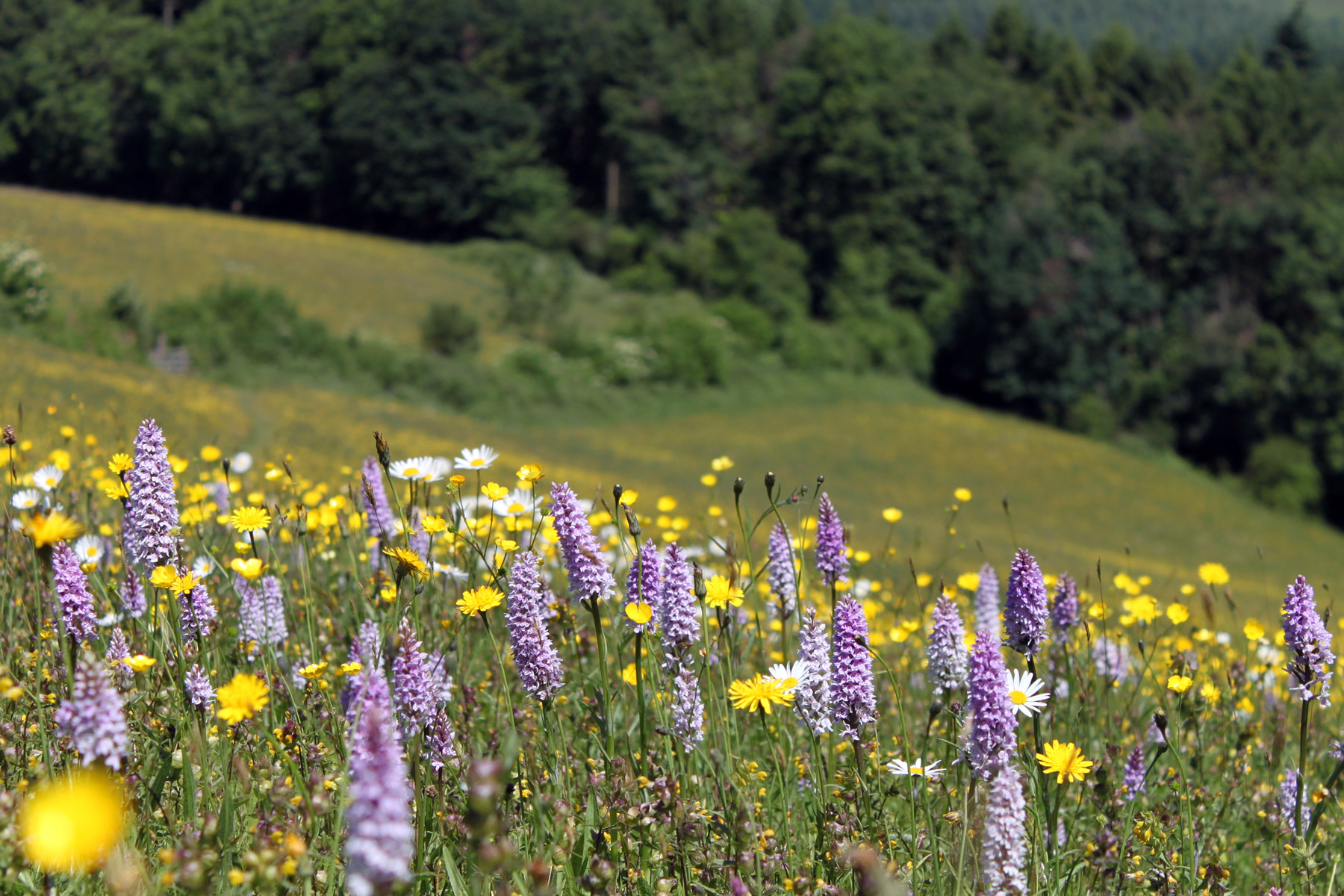Caroline Hanks (Herefordshire Meadows) chaired a sequence of talks and a panel discussion at a Zoom event hosted by Plantlife as part of their Meadow Makers partnership, that gave an introduction to the rapidly evolving science on grassland carbon.
Drawing upon the findings from her 2021 report for CIEEM entitled Carbon and Ecosystems: Restoration and Creation to Capture Carbon Penny Anderson BSc., MSc., CEcol, FCIEEM discussed how the carbon content in soils varies across different habitats, what drives soil carbon loss and also what the opportunities are to halt and reverse these losses and maximise soil carbon capture. She highlighted the huge potential that grasslands in the UK have as a carbon store and how best to leverage this opportunity. Essential components to this are a sympathetic grazing management system and species diversity.
Phil Wilson PhD MCIEEM reinforced this message by discussing the outcomes of a large meta analysis of over 1400 soil samples collected by and for Natural England that demonstrated, among other things, with statistical significance, how grazed grasslands store more carbon than undermanaged grasslands and how grasslands in “favourable condition” ( usually referring to SSSI status) store more carbon than those in “unfavourable condition”.
The two speakers were then joined by Dr Lisa Norton, a landscape agroecologist with the UK Centre for Ecology and Hydrology (CEH), Bill Grayson, grazier and ecologist to hold a panel discussion on some of the questions raised by audience.
You can watch the full webinar again here.
The Meadow Makers partnership next step will be to work with soil scientists and others to develop a consistent and affordable protocol to measure soil carbon across the whole spectrum of grasslands in the farmed landscape.
